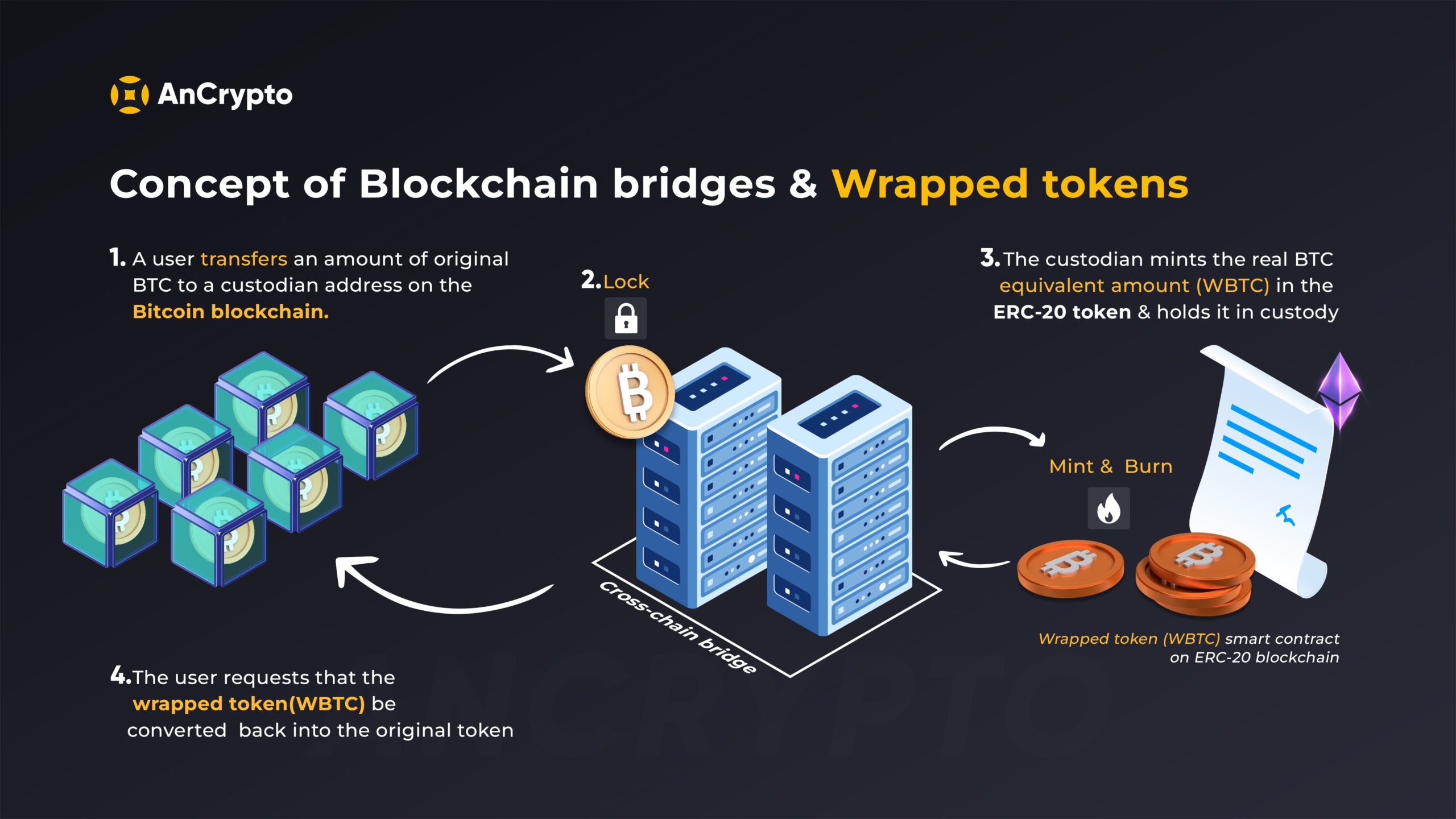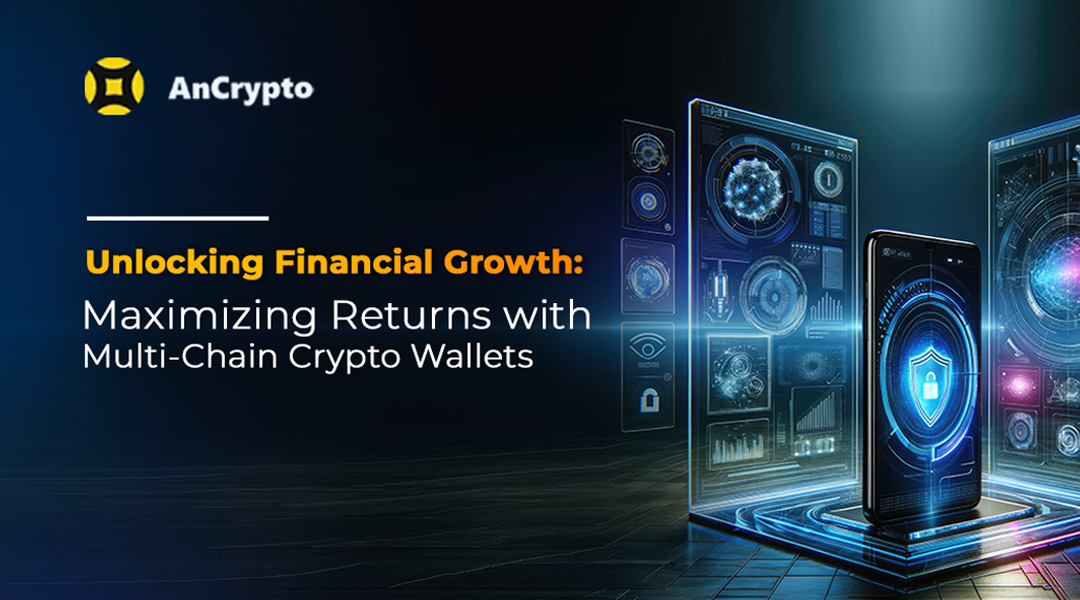Just like in the physical world, a bridge helps to connect two roads or locations, and a Blockchain Bridge helps to connect the two Blockchain networks. The connection between the two Blockchain networks lets users transfer tokens or data from one Blockchain to another. But why do we need the Blockchain Bridge in the first place?
What are Blockchain Bridges?
Blockchain bridges are infrastructure that allows different blockchain networks to communicate and exchange data, assets, and information. They work by connecting two or more independent blockchain networks and enabling them to transfer information and assets between each other in a secure and transparent manner.
This helps to increase the interoperability of different blockchain networks and makes it easier for users to transfer assets and information across different platforms. Blockchain bridges can also help increase the scalability of decentralized networks and enhance overall security in the ecosystem.
What are the Benefits of Blockchain Bridges?
Different blockchains have their own smart contract rules, consensus policies, architecture, and token standards. This makes it complex to execute a transfer of assets between multiple blockchains.
Blockchain has certain limitations, and interoperability is one of them. Each Blockchain has its standards and set of rules that are not always compatible with other Blockchains, which is why cross-chain transfers are impossible.
For example, One can not run the Token of Bitcoin Blockchain on Solana Blockchain as both the Blockchain have different standards.
Therefore, Bridge is used for creating the synthetic derivatives for representing the various Blockchain assets.
- Increased interoperability:
- Improved user experience:
- Increased accessibility:
- Enhanced security:
- Greater scalability:
Blockchain bridges allow different blockchain networks to communicate and exchange data, making it easier to transfer assets and information across different platforms.
By enabling seamless transfers between different blockchain networks, blockchain bridges can help to improve the user experience for those who use multiple blockchains.
By making it easier for users to transfer assets between different blockchains, blockchain bridges can increase the accessibility of decentralized technologies for a wider range of users.
By providing a secure and transparent method for data and
transfers between different blockchains, blockchain bridges can help to increase overall security in the decentralized ecosystem.
Blockchain bridges can help to increase the scalability of decentralized networks by enabling the transfer of data and assets across multiple platforms, rather than having to process everything on a single chain.

Types of Blockchain Bridges
- Token Specific Bridge
- Chain-Specific Bridge
- Multi-chain/Multi-token Bridge
Token-specific Bridge is a unidirectional bridge that enables users to move the token only in a single direction i.e from the source blockchain to the destination blockchain.
Chain-specific bridges enable the users to transfer assets from/to a specific chain.
For example: Using the Terra Bridge, you can move assets from Terra Blockchain to another blockchain and vice-versa.
Chain-specific bridges are developed by a specific blockchain for cross-chain bridging from a particular blockchain to any other blockchain.
Multichain/Multitoken Bridge enables the users to move the tokens from one Blockchain network to the other. Some of the most popular Multi-chain/ Multi-token bridges are Multichain, Wormhole, ChainPort, and Allbridge.
All these bridges look the same, however, they follow different mechanisms and parameters like support for the number of Blockchain networks, tokens, security models, etc.
How does the Blockchain Bridge Work?
Suppose you want to transfer a Bitcoin to Ethereum. To do so, you need to deposit the Bitcoin onto the Blockchain Bridge.
The bridge will not lock your Bitcoin in a smart contract and mint the equivalent amount of Ethereum Blockchain. Blockchain bridge works upon the “ Burn and Mint” protocol; tokens are burned ( destroyed) on the source Blockchain and minted ( created) on the destination Blockchain.
When you make the Bitcoin transfer to Ethereum, the Blockchain Bridge will hold the Bitcoins, burn them, and create the equivalent in Ethereum. Here you need to note one thing; none of the cryptos are moving from one place to the other, instead, the amount you want to transfer is locked in the Smart Contract, and you get an equivalent amount of Ethereum.
And, if you want to convert the Ethereum back to Bitcoin, you will again use the bridge. Whatever is left will be burned and an equivalent wallet will be transferred to your wallet.
And, if you want to do the same without a bridge, you need to convert the Bitcoin to Ethereum on an exchange, withdraw the amount in your wallet, and again deposit it to the other exchange.

Blockchain Bridges and Wrapped Tokens
To better understand this, let’s first understand the concept of the wrapped token. A Wrapped token is a tokenized version of another crypto asset. This means, tokenizing an already existing currency or token.
Now, one simple example of bridges is the token transfers that we do in our wallets. If a user has to sell a token ‘A’, s/he can directly do it by swapping with another token ‘B’. For example, selling BTC worth 10 USD into ETH is achievable with simple taps on the screen.
However, this adds transaction costs while causing uncertain price volatility.
Let’s understand how a blockchain bridge resolves the gap. If you want to send 1 BTC to the Ethereum network, the bridge would lock the BTC and create an equivalent token in the ERC-20 standard known as wrapped BTC (WBTC). While the BTC is locked in the bridge smart contract, an equivalent amount is minted in the destination blockchain (Ethereum in this case).
This is just one use case of bridges. We discuss more later in the post. Meanwhile, here’s a quick run through the key benefits of blockchain bridges.
How AnCrypto is utilizing Bridges to Enhance User Experience?
In the pursuit of delivering a superlative cross-chain experience to the users, AnCrypto uses blockchain bridges. Bridges work as connectors to port assets from one blockchain to another bypassing the hassles of sluggish TPS and higher gas fees.
By enabling cross-chain transfers, AnCrypto users gain access to new protocols on other chains and leverage multi-environment features.
- Greater interoperability between networks.
- Enhanced liquidity enables cross-network asset trading.
- Allows users to benefit from different scaling solutions on each network.
- An added a layer of security to perform faster and safer transactions.
Currently, the decentralized wallet provides bridging among 3 chains – Ethereum, Polygon, and Binance Smart Chain. Going forward, the web3 ecosystem will extend bridging to more chains.
Future of Blockchain Bridges
Bridges have introduced interoperability in the Blockchain network, ultimately leading to mass adoption. You can see the exceptional growth in intra-blockchain transactions with bridges, and it has also reduced the transactional cost making it the preferable medium for Blockchain transfers.
Wrap Up
The Blockchain industry is growing and introducing innovations and bridges in one of those innovations. Bridges are helping the Blockchain ecosystems to become interoperable and cohesive which makes the entire Blockchain system better by removing network congestion. The future development of Blockchain bridges.




